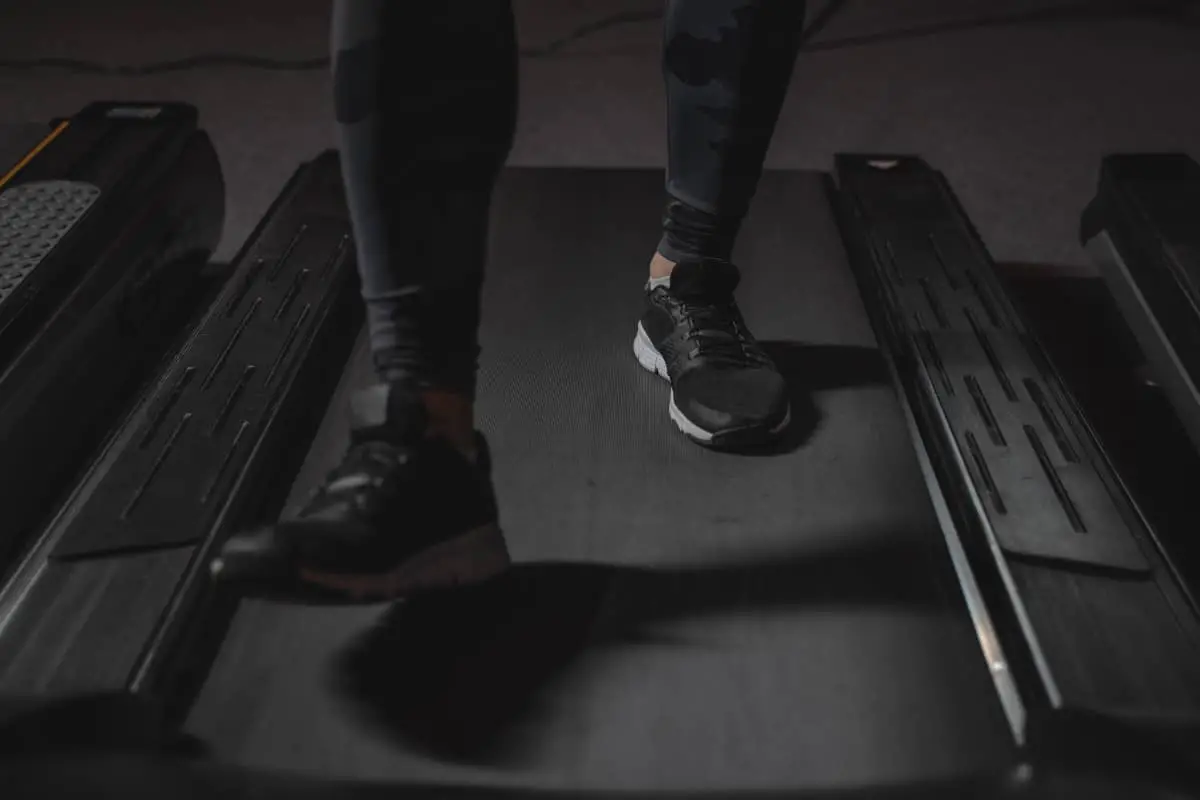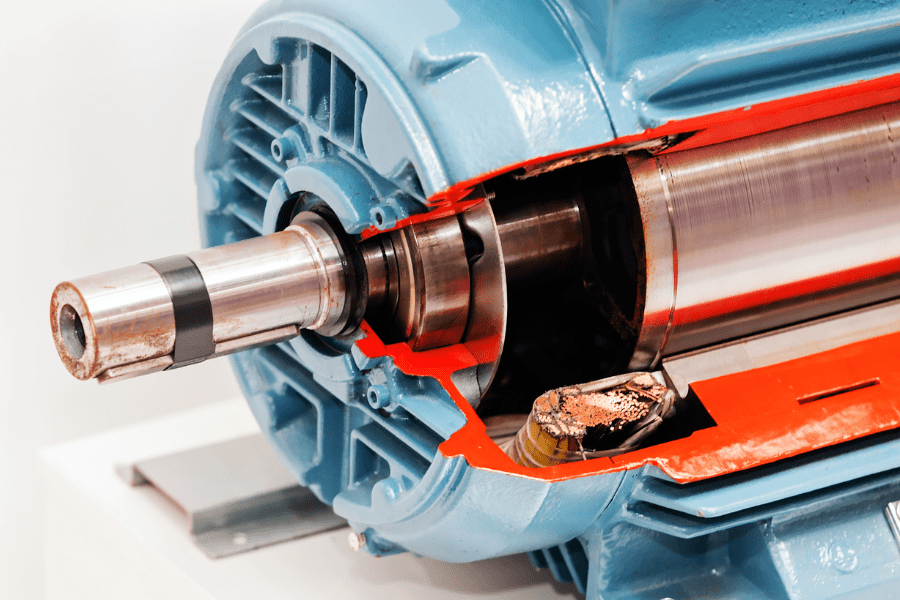Wondering if you have to worry about the user weight limit of a home treadmill? I’ve compiled a list of the most popular home treadmills and their load limits. Here’s what you want to know.
When shopping for a treadmill, looking at the user load limit is important since some can be as low as 200 lbs. Most home treadmills have a load limit of 250 lbs. to 350 lbs. while some can handle as much as 400 lbs. Exceeding the load limit can significantly shorten the lifespan of a treadmill.
Below you can find a list of popular home treadmills and their weight limits. You’ll also find out why you should or shouldn’t care about that number.
Contents
Treadmill Weight Limits List
Different treadmills have very different specifications. There’s a reason why there are so many on the market. Variety is a good thing but you do have to know what you’re looking for. So if weight limit is important to you, here is a list of about 60 different models that are meant for domestic use. That information will give some more clarity on our question.
The majority of domestic treadmills have a maximum weight capacity of 250-350 pounds.
Looking for a treadmill with a high load limit? Check out this post with the best affordable treadmills with 300+ pound weight capacity..
| Brand | Model/Series | Weight limit |
|---|---|---|
| Life Fitness | T3 | 350 |
| T5 | 400 | |
| F3 | 350 | |
| Sole Fitness | F63 | 325 |
| F80 | 375 | |
| F85 | 400 | |
| TT8 | 400 | |
| F65 | 350 | |
| S77 | 400 | |
| Landice | L7 | 400 |
| L8 | 500 | |
| BowFlex | 10 | 400 |
| 22 | 400 | |
| Nautilus | T616 | 300 |
| T618 | 350 | |
| LifeSpan | TR1200i | 200 |
| TR2000i | 300 | |
| TR3000i | 350 | |
| TR5500i | 350 | |
| TR4000i | 350 | |
| True Fitness | M30 | 300 |
| M50 | 300 | |
| Z5.0 | 400 | |
| Z5.4 | 400 | |
| Performance 100 | 350 | |
| Performance 300 | 350 | |
| Performance 800 | 350 | |
| 950 | 350 | |
| 3G | Lite Runner | 300 |
| 80i | 325 | |
| Pro Runner | 350 | |
| Elite Runner | 400 | |
| Xterra | TR300 | 300 |
| TR6.4 | 325 | |
| TR6.6 | 350 | |
| TRX2500 | 300 | |
| TRX3500 | 350 | |
| TRX4500 | 350 | |
| TRX5500 | 350 | |
| TR150 | 250 | |
| TR200 | 250 | |
| TRX1000 | 250 | |
| Horizon Fitness | T101 | 300 |
| T202 | 325 | |
| T303 | 325 | |
| 7.0AT | 325 | |
| 7.4AT | 350 | |
| 7.8AT | 375 | |
| Schwinn | 810 | 275 |
| 830 | 300 | |
| 870 | 300 | |
| BodyCraft | T800 | 425 |
| T400 | 350 | |
| T1000 | 475 | |
| NordicTrack | EXP7i | 300 |
| EXP10i | 300 | |
| T6.5s | 300 | |
| Sunny Health | SF-T7955 | 275 |
| SF-T4400 | 220 | |
| 7750P | 220 | |
| SF-T7917 | 265 | |
| SF-T7857 | 295 | |
| Average | 335.48 |
As you can see, there is a wide range of load limits between treadmills. The average load limit of this selection of treadmills is 335 lbs. However, when you look through the list, you can see that the load limits range from 200 to 400 lbs. The majority of treadmills can handle from 250 lbs. to 350 lbs.
Keep in mind: These are treadmills for domestic use. Models for commercial use tend to have slightly higher load limits. Most commercial models can handle 350-450 pounds.
If you’re looking for the actual weight of treadmills, click here.

Not sure how to choose the right treadmill for you? Click here to find a complete guide on how to select the right treadmill.
What Happens If You Exceed a Treadmill’s Weight Capacity?
Many people wonder if the specified weight limits are actually important to follow. The short answer is yes, and in this chapter, we’ll delve into the reasons why it’s crucial to stay within those limits and the potential consequences of exceeding them.
Damage
One of the primary reasons why you should pay attention to a treadmill’s weight capacity is the risk of causing damage. Treadmill manufacturers carefully determine these weight limits based on the treadmill’s design and capabilities. They do this to ensure that the treadmill operates safely and efficiently under typical usage conditions.
Manufacturers understand that potential buyers often consider these specifications when making purchasing decisions. If a manufacturer could safely claim a higher weight limit than their competitors, they likely would. However, there’s more to it than just competition. The weight limit is a critical safety factor.
If you significantly exceed a treadmill’s weight limit, you run the risk of damaging the machine, mainly the belt and deck.
When going over the load capacity, the treadmill belt sticking to the deck is a common issue. This not only damages the belt but can also harm the deck itself. The belt also suddenly comes to a stop which can make you trip. Exceeding the weight limit can also start bending frames at some point.
Premature Wear
While a treadmill won’t immediately break down if you slightly exceed its weight capacity, doing so can lead to premature wear and tear. Treadmill components like the belt, motor, rollers, and bearings are engineered with specific load limits in mind. When these limits are exceeded, stress on these components increases, leading to accelerated wear.
Although the treadmill might not fail outright, the added stress will wear down these parts faster than intended. This results in higher maintenance costs and the need for more frequent replacements or repairs.
That means your maintenance costs will go up quite a bit.
Consider this: A treadmill’s motor is designed to handle a particular load. Exceeding that load regularly will cause the motor to work harder and potentially overheat, reducing its lifespan significantly.

Liability
Another important aspect to consider is liability. Treadmill manufacturers provide warranties to cover defects and malfunctions under normal usage conditions. However, if you misuse the treadmill by exceeding its weight capacity, the manufacturer may void your warranty.
In other words, if the treadmill is damaged or parts wear out sooner than expected due to overloading, the manufacturer may not be obligated to repair or replace them at no cost. This can result in unexpected expenses for the treadmill owner.
Suggested post: Which treadmill has the best warranty
Usage Matters
It’s worth mentioning that the impact of exceeding a treadmill’s weight limit can vary based on how you use the treadmill. Walking, for example, exerts significantly less force on the machine than running or jogging. When running, the impact weight is 1.5x-3x as much as when you’re just walking.
If you primarily use your treadmill for casual walking, there is a bit more leeway regarding the weight limit. However, it’s always safer to stay within the specified limits for your treadmill model.
Suggested post: Will a treadmill damage my floor?
Are Treadmill Weight Limits Accurate?

In most cases, you can trust the weight limit specified by the manufacturer. These limits are designed to keep users safe and prevent damage to the treadmill. However, it’s essential to consider the factors mentioned below and use common sense:
Factors Influencing Accuracy
Several factors can affect the accuracy of a treadmill’s weight limit:
What If You’re Too Heavy For The Treadmill?
Facing the reality that you may exceed a treadmill’s weight limit can be discouraging, but it’s essential to not give up. However, just getting on the mill knowing it’s not built for you is also a bad idea. There are a few things you can do;
Are Treadmills With a Higher Weight Capacity Better?
Now that we’ve discussed weight limits, you might wonder if having a higher weight limit on a treadmill is always better. Are there any benefits or drawbacks to choosing a treadmill with a weight limit higher than your needs?
There aren’t many downsides to having a high load limit except one we’ll get to later. Let’s take a look a the benefits first. To hold a higher weight, it has to be constructed in a sturdier way. That means more material and better construction are used.
Favorite Cardio Accessories
Check out these accessories that improve a home cardio workout:
- Equipment mat: All cardio equipment should be put on an equipment mat. The Rubber-Cal mat (Amazon) is an affordable yet very high-quality choice.
- Interval timer: To time your intervals and workouts, there is no better choice than the GymNext Flex. It’s super easy to use and set up with a phone app.
- Tablet holder: Cardio can be boring. With this tablet holder (Amazon) you can follow along with on-demand workouts or just watch a movie on any cardio machine.
- Heart rate monitor: Monitoring your heart rate is very important while doing cardio. The Polar H10 (Amazon) connects to almost anything you can imagine and is very accurate.
To find which cardio machines I recommend for home gyms, click here.

